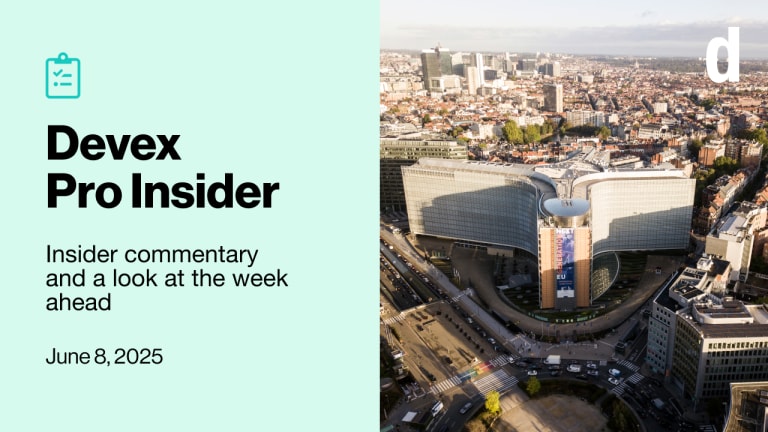
Since the departure of Administrator Mark Green in April of this year, the U.S. Agency for International Development has lost its bearings. It is less influential on the world stage, a less reliable partner to allies and partners, and less constructive in advancing U.S. interests through humanitarian and development cooperation.
Mark Green: Next administration should address 'fragmentation' in foreign aid
Speaking at Devex World, the executive director at the McCain Institute and former administrator at USAID shared his views on the fallout from the U.S. election, USAID's leadership, and how to better integrate development agencies.
This is the result of four years of hostility from the White House toward U.S. foreign assistance. President Donald Trump sought to slash funding for diplomacy and development in budgets he proposed and signaled disregard for the very idea of addressing long-term international development challenges. Career USAID staff have held the world’s largest development agency together despite attacks by some political appointees.
Certainly, a new administration will want to take swift action to right the ship and put its own mark on America’s lead development agency, so that it may once again serve as a vital tool to promote shared prosperity, stability, and collaboration on problems that no nation can solve alone. As the new administration contemplates forward-looking strategies to strengthen USAID and get global leadership back on track, we recommend taking a close look at two specific areas of reform that already enjoy strong bipartisan support.
The first is to complete USAID’s reorganization, known as “transformation,” with modifications to ensure USAID is once again fully equipped to lead on development issues. This ambitious reorganization, launched by Green, has gone some ways toward modernizing USAID’s structure, policies, and processes to better address the changing landscape of international affairs.
A new administration will want to take swift action to right the ship and put its own mark on America’s lead development agency, so that it may once again serve as a vital tool to promote shared prosperity, stability, and collaboration on problems that no nation can solve alone.
—By seeking input from career USAID staff and drawing on ideas from a wide range of development professionals, including proposals first suggested during the Barack Obama Administration, the organizational transformation instituted common-sense changes to improve efficiency and functionality that has garnered broad support internally and externally. While the new Biden team will inevitably want to make adjustments, another wholesale reorganization would waste time and divert attention when USAID needs to be laser-focused on helping the world build back better from COVID-19.
One important piece of the transformation puzzle is not yet in place. The critical Bureau of Policy, Resources, and Performance, which would bring together USAID’s planning and budget functions, has yet to be cleared by the relevant congressional committees. No large organization can be truly effective if it is not able to align its programmatic strategies and plans with its resource allocation. The proposed bureau would align budget and policy, allowing the agency to be more responsive to administration priorities and operate with far greater efficiency. Completing this process at USAID should be an early priority for the Biden administration.
A second area of modernization is a continued focus on policy and program approaches that empower local actors and build local ownership. This is a long-standing objective of development policy and has been pursued by both Republican and Democratic administrations, including under Green. As lower-income countries continue to build institutional capacity and grow their reservoir of professional and technical talent, the imperative to work locally will grow.
For U.S. government programs, this means adapting current business practices, developing new program design and acquisition processes tailored to working with and through local governments and institutions, and reorienting and upskilling USAID procurement and technical officers to develop and work with new business models that shift the role of international organizations from intermediaries managing financial and compliance risk to partners providing technical and management services.
These efforts must be accompanied by an urgent focus on tailored acquisition and assistance tools to enable joint ventures with the private sector and other new partners, particularly at the subnational level. Even with some progress made during the last two administrations in these areas, the USG’s labyrinth of rules and regulations, even for relatively small grants and contracts, leaves most local partners and smaller international organizations locked out of partnering with USAID. This is a glaring barrier to local ownership, a key tenant of effective assistance, and a worthy priority for a new USAID administrator.
The new president, secretary of state, and USAID administrator are coming into office at a moment when a global pandemic and the effects of climate change confront the international community with unprecedented economic, social, and political challenges. They will inherit a development agency that is anxious to regain its footing, welcome bipartisan support, and provide leadership and action to address those challenges.









